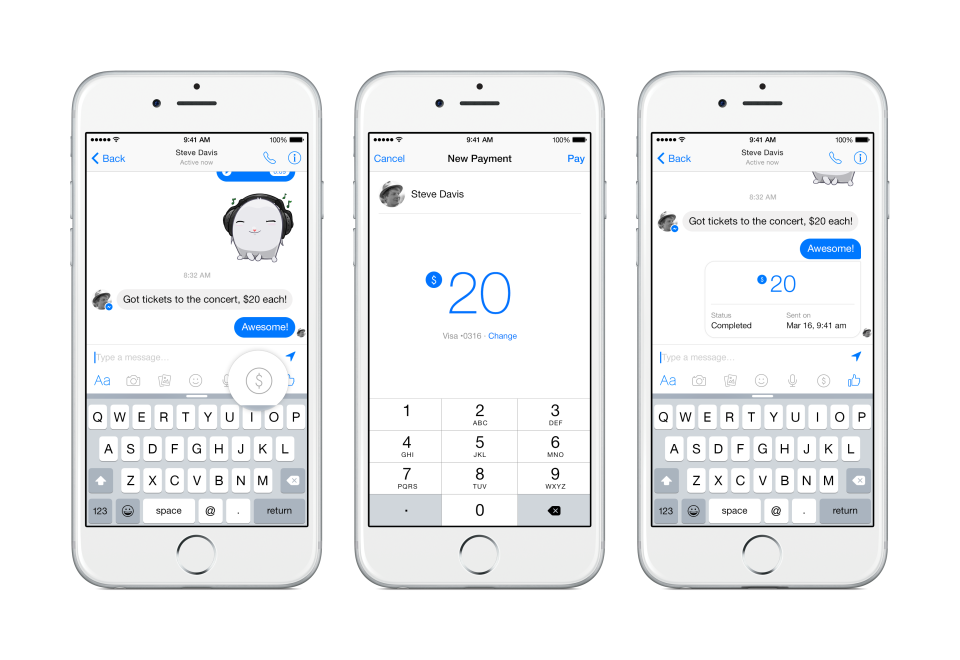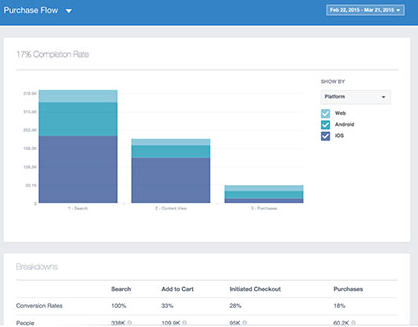Whether you’re a social media professional or a regular netizen, Facebook has become so ingrained in our lives that we can’t help but care deeply when we hear news about it. With Facebook, it’s always personal—whether you use it for business or pleasure, actively posting or casually browsing from time to time. For many of us, Facebook was our introduction to the concept of a social network. For a whole generation, it will be an inseparable part of the Internet. And with Facebook’s latest announcements and releases, it seems that more and more of the Internet’s possibilities are being encapsulated within the network.
Facebook’s next major move has been a hot topic for techies and journalists over the past year. Some have speculated the next initiative to involve online payments and e-commerce; others cited the Messenger app split and the WhatsApp acquisition as telling signs of Facebook’s move into messaging platforms. This week’s developers conference, F8, has finally shed some light on the real plans for the network, and the answer to ‘What’s Facebook planning to do next?’ is as genius as it is simple: everything. Here are just a few of the things you can expect to happen on Facebook very soon.
8 new things you can do with Facebook
1. Pay your friends and shop online
Earlier this month, Facebook has officially released the peer-to-peer payment feature that was the subject of many rumours last year. The feature is built into the Messenger app, where users can exchange payments by typing in the ‘$’ symbol followed by the desired amount, entering their banking information, and pressing ‘Pay’. The feature will be available on iOS and Android platforms, as well as the web version of the app. It’s expected to start rolling out to US users over the next few months.

However, it’s likely that the online payment capability won’t stop at just helping you get your friend back for pizza. Facebook developers have also announced a more robust way to communicate with brands on the network (more on this in #6), which, together with the built-in payment system, promises a straight path towards making Messenger an online shopping platform—among other things.
2. Share Facebook videos on other sites
Facebook videos were arguably the network’s biggest release since the split of the Messenger app: they helped engagement skyrocket for users and brands who were quick to adopt the native videos, and even gave YouTube, the largest video-sharing network, a run for its money (and content creators).
This week at F8, Facebook announced that users will now be able to embed videos from the network on other sites. While initially it may seem risky to take the content away from the News Feeds, it will actually do quite the opposite—embedding Facebook videos on users’ blogs or official web pages will skip the extra step of re-uploading the video and garner the much-desired views.
3. Message GIFs to friends
Another big announcement coming out of the two-day developer conference is the Messenger Platform. No longer just a standalone app that replaced the familiar Facebook chat for mobile users, Messenger capabilities are now expanding to serve as a platform for other apps, such as Pic Stitch, GIPHY, and ESPN. That means no more switching to a browser or photo library to dig up that funny cat GIF!

Besides enriching the user’s experience on the messaging app, Messenger’s expanded capabilities will likely mean more time spent in the app, resulting in more dark social traffic attributed to Facebook and its channels.
4. Get in-depth analytics for apps
If you’re a fan of Facebook Insights, you’re going to love Facebook’s latest data tool: Analytics for Apps. This web analytics dashboard provides users with information about their app’s performance across different platforms. The tool leverages Facebook’s software developer kit, and promises to provide metrics on audience engagement, demographics, and conversion rates. The F8 presentation on Analytics for Apps demonstrated some use cases of the dashboard’s functionalities, such as providing data on the user’s move through the sales funnel, or measurements of campaign performance across different demographics.
One of the more exciting features of Analytics for Apps, which is currently in closed beta, is the ability to measure the performance of marketing campaigns outside of Facebook’s network. Overall, Facebook’s free analytics dashboard will give app developers and marketers a bigger selection of data tools at their disposal.
5. Share comments from your website to your Facebook Page
Another F8 announcement had to do with one of the most important components a social network can offer—online conversations. A new feature will sync comments from Facebook Timelines and any other sites where they may be embedded, and update them in real-time. Better synchronized comments could encourage more brands to incorporate Facebook conversation feeds into their web pages, thus increasing cross-platform engagement with other users.
6. Live-chat with customers
The second part of the Messenger Platform announcement is particularly relevant to brands on the network. Businesses on Messenger is a new set of features specifically designed to help brands interact with customers on the app. Users will have the ability to reach out to businesses as they currently do with friends—by chatting with them via the Messenger app. With Businesses on Messenger, you could place an order, receive shipping information, and track its current status directly in the app. Customers will be able to inquire about their orders and modify them, all while chatting with customer service agents over Messenger.

For companies with an established Facebook presence, this is an incredibly advantageous move to shorten response times and offer better customer service. For businesses who haven’t thought about making a Facebook Page yet, this is a great reason to reconsider the network.
7. Get better recommendations
You might recall our recent discussion of ways Facebook uses deep learning algorithms to sort through user data. At F8, Facebook’s CTO Mark Schroepfer shared some new ways of using AI to identify context for videos and posts that appear on the network. New systems can distinguish various types and levels of complexity for information—such as identifying the sport played in a particular video, or picking out the subject and the object in a sentence. The F8 presentation also went over some of the voice recognition and transcription software that has been helping out the AI algorithms figure out context for the content hosted on the network.

How does this help users? With more advanced deep learning algorithms, the network is better able to tailor News Feed and Trending content, as well as advertising, to the user’s interests. Sorting through the user data also helps Facebook’s researchers analyze some common trends in social media user behaviors, and share them with the world for education (and entertainment) purposes.
8. Shoot and share 360-degree videos
Analytics, a new rich platform for businesses, online payments—with this many big announcements, what does Facebook have in store for us next? If you guessed “spherical video”—I’m impressed, because not even the tech reporters present at F8 guessed that this is what the company meant by “teleportation” features it mentioned earlier during the conference. Facebook will now support 360-degree videos on the network, along with soon-to-come live broadcasts of the same kind. It’s not yet clear when the immersive video feature will be available to users, but I bet many will be looking forward to it.
